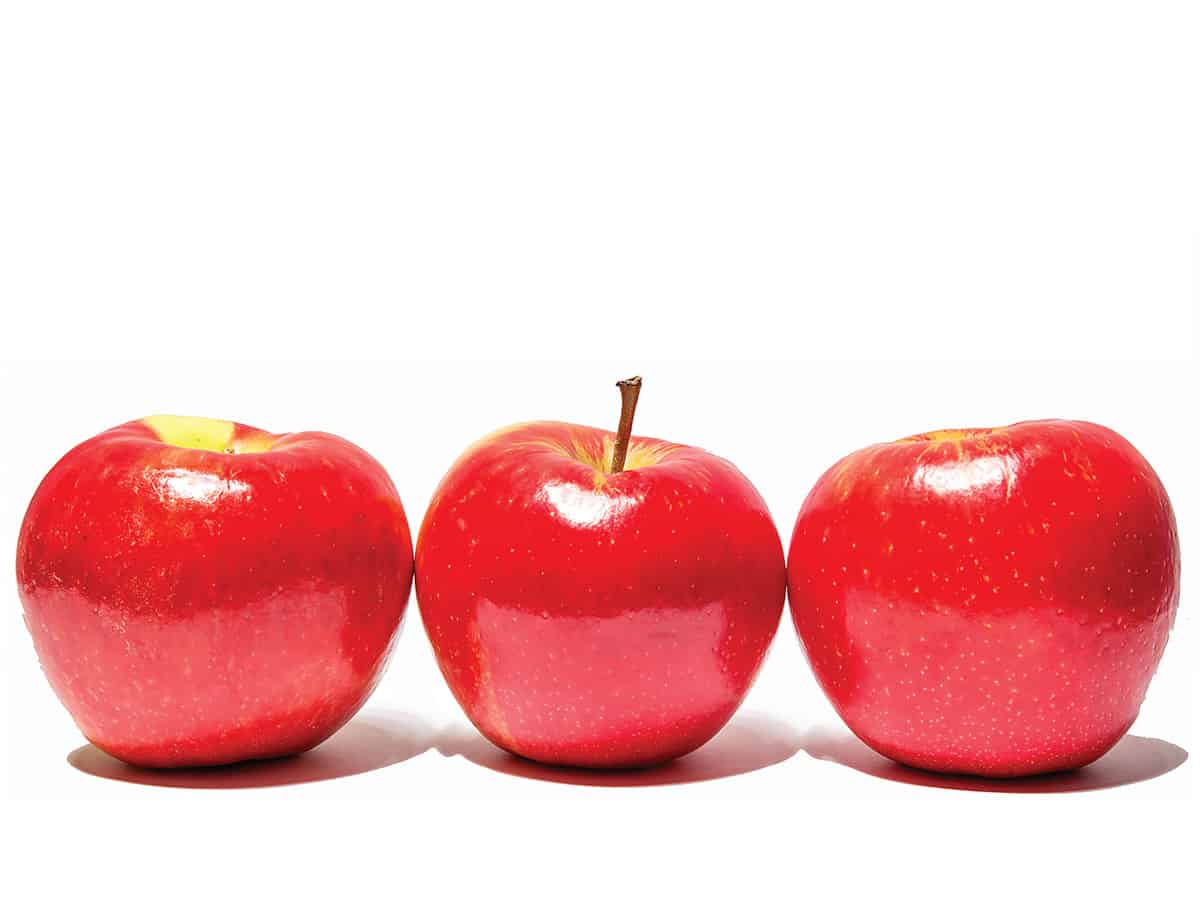Adam and Eve Day

One of the most arduous tasks of the Christmas season at the Kaylor household is the annual assembly of the Christmas tree. We have had the same artificial tree for the last 22 years. We bought the tree because of my allergies. Now that it has 22 years of holiday dust on it, it’s probably not that different on the sneeze scale than a real tree, but it’s paid for and I don’t have to water it. The assembly process seems to take way longer than it would to grow an actual evergreen tree, but once it’s together, it does look beautiful — especially with all the lights and ornaments.
It’s those ornaments that make the effort worth it. Now that our kids are grown up and in college, I get really nostalgic (and shed a few man tears) decorating the tree with those handmade baubles and bangles they created when they were little. Digging through those boxes is kind of an archaeological journey through our family history and I enjoy each memory.
Of course, there are other ornaments that are more like filler. For example, we used to have boxes of little plastic apple ornaments that I didn’t quite know what to do with. After all, what do apples have to do with Christmas? I wound up leaving them off the tree year after year until they basically disappeared.
But that turned out to be a mistake. A few years ago, while researching a Christmas Eve sermon, I came across an article about a very old Christmas tradition that rendered my apple aversion invalid. In the medieval Christian church, December 24 wasn’t only Christmas Eve; it was also known as “Adam and Eve Day.” On that day, common people playacted the story of Adam and Eve as a kind of morality play in preparation for Christmas Day. But before the play would begin, the actors would parade through town with “Adam” carrying the Tree of Life on which were hung (you guessed it) apples.
When you think about it, this is the perfect precursor to Christmas Day and the story of God coming in person to save us. The story of Adam and Eve, the story of human history, is a story of sin in which all of us participate. Our human interconnectedness means that my sin always has consequences for those around me, despite our culture’s “no harm, no foul” way of thinking. Patterns of sin are passed down in families today, just as they were in the days of Abraham, Isaac and Jacob. We are genetically predisposed to repeat the sins of the past and, as a result, we’re also predisposed to death. Adam’s likeness is stamped on all of us. The apple doesn’t fall far from the tree.
But the apple is also a reminder that God has done something about our sin. No matter how withered we feel, how barren, how sin-scarred and dry, a shoot of new life can break forth in our lives because of what God has done in Jesus.
Adam and Eve Day is always followed by Christmas. A new Adam undoes the sin of the old.
Charles Wesley wrote about this in one of the little-known verses of “Hymn for a Christmas Day” (or as we now know it, “Hark! The Herald Angels Sing”):
Adam’s likeness, Lord, efface,
Stamp Thine image in its place:
Second Adam from above,
Reinstate us in Thy love.
Let us Thee, though lost, regain,
Thee, the Life, the inner man:
O, to all Thyself impart,
Formed in each believing heart.
Hark! the herald angels sing,
“Glory to the New-born king!”
This is a great verse to sing, especially this year when Christmas Eve is a Sunday. What would it be like to make your morning worship a remembrance of “Adam and Eve Day” and your evening a celebration of the new Adam who has come to stamp his image in us?
You never know when decorating a tree might be a form of worship. With every branch and every ornament, we recognize the incredible life-giving power of God who has overcome sin and death.
Time to go buy some apples!
Share this Post:
Looking for More?
Imagine having fresh help in preparing your sermons right at your fingertips, especially during those weeks when your words and ideas are not flowing easily. Homiletics Online won’t write the sermon for you but once you’ve used this treasury of solid content, you’ll wonder how you ever got along without it.
Would you like to see your post on this blog?
We are always looking for talented and passionate writers who want to share their ideas on preaching the Gospel. If that sounds like you, then please use the button to submit a guest post.

